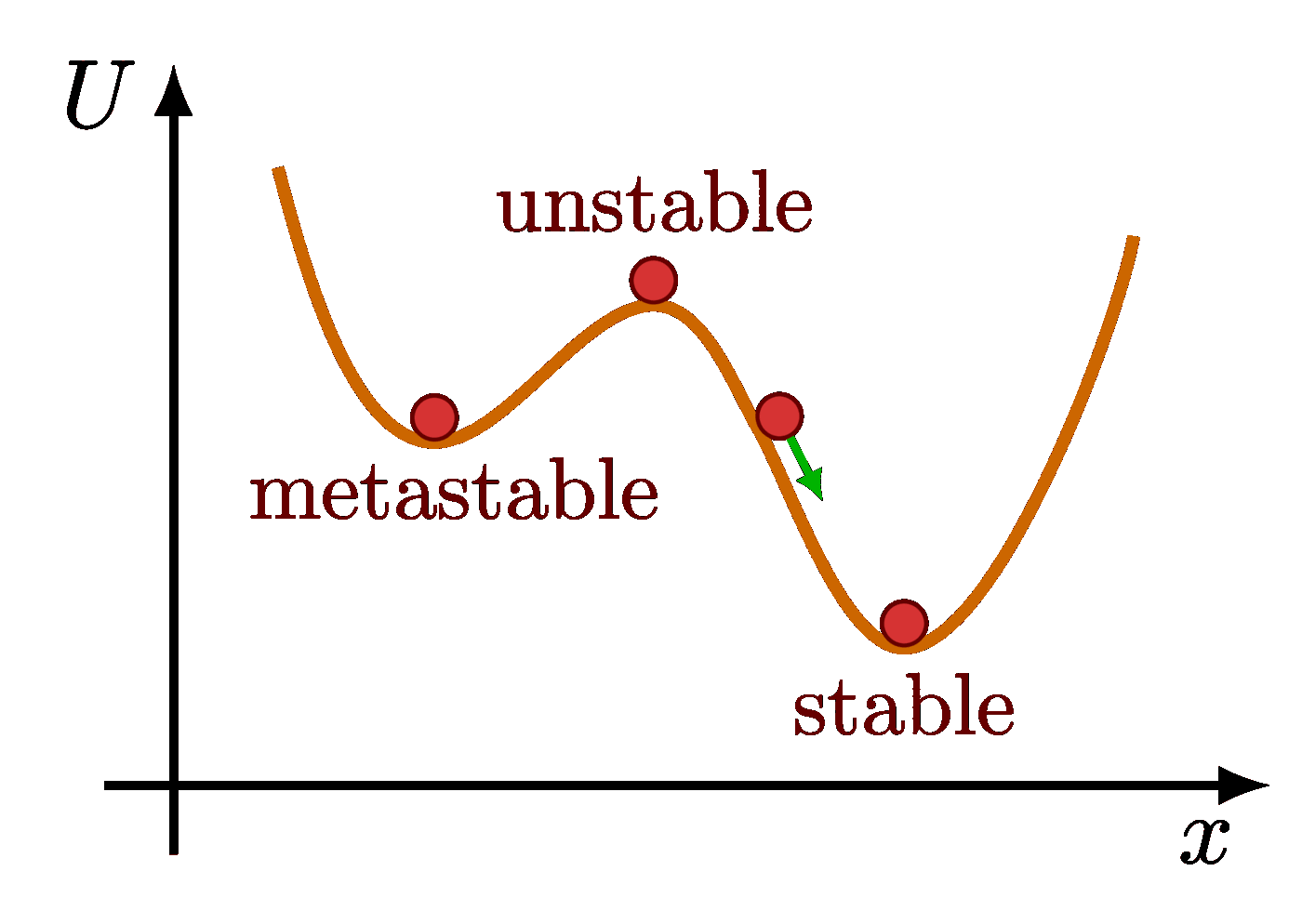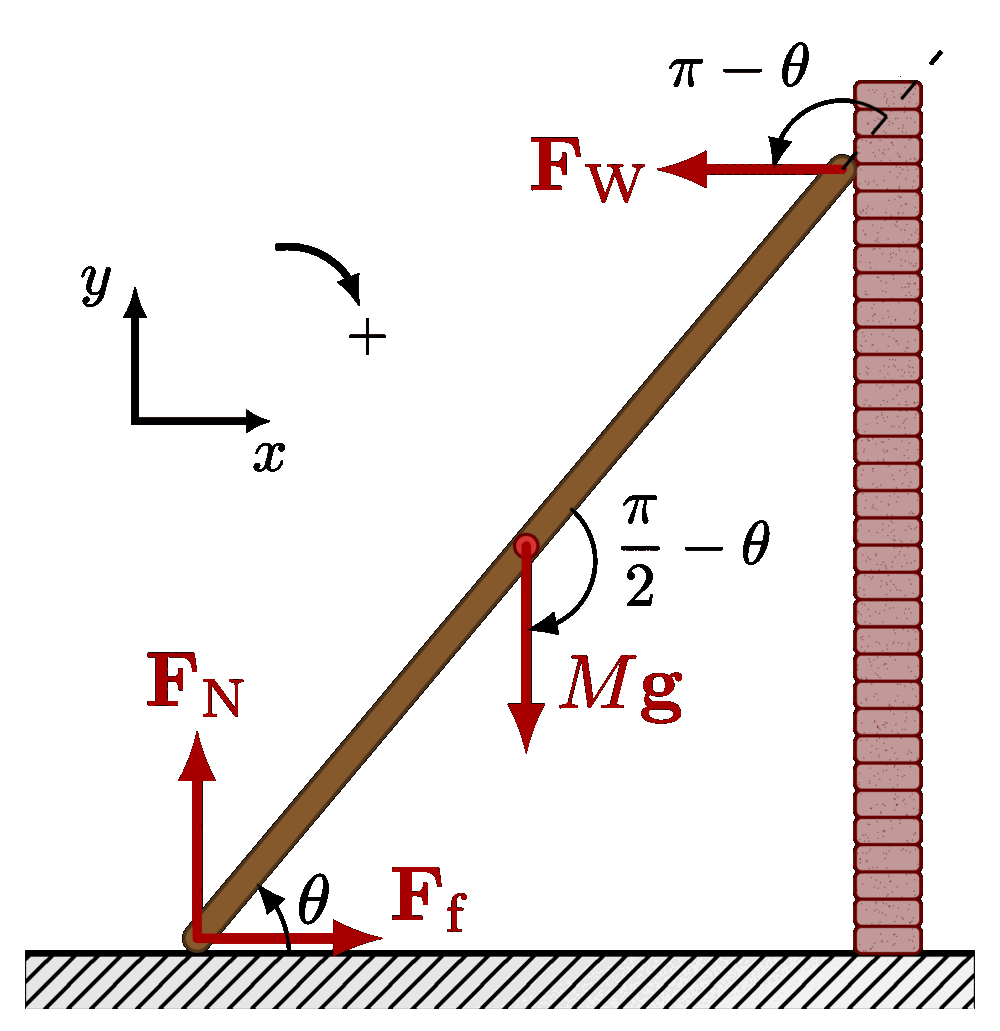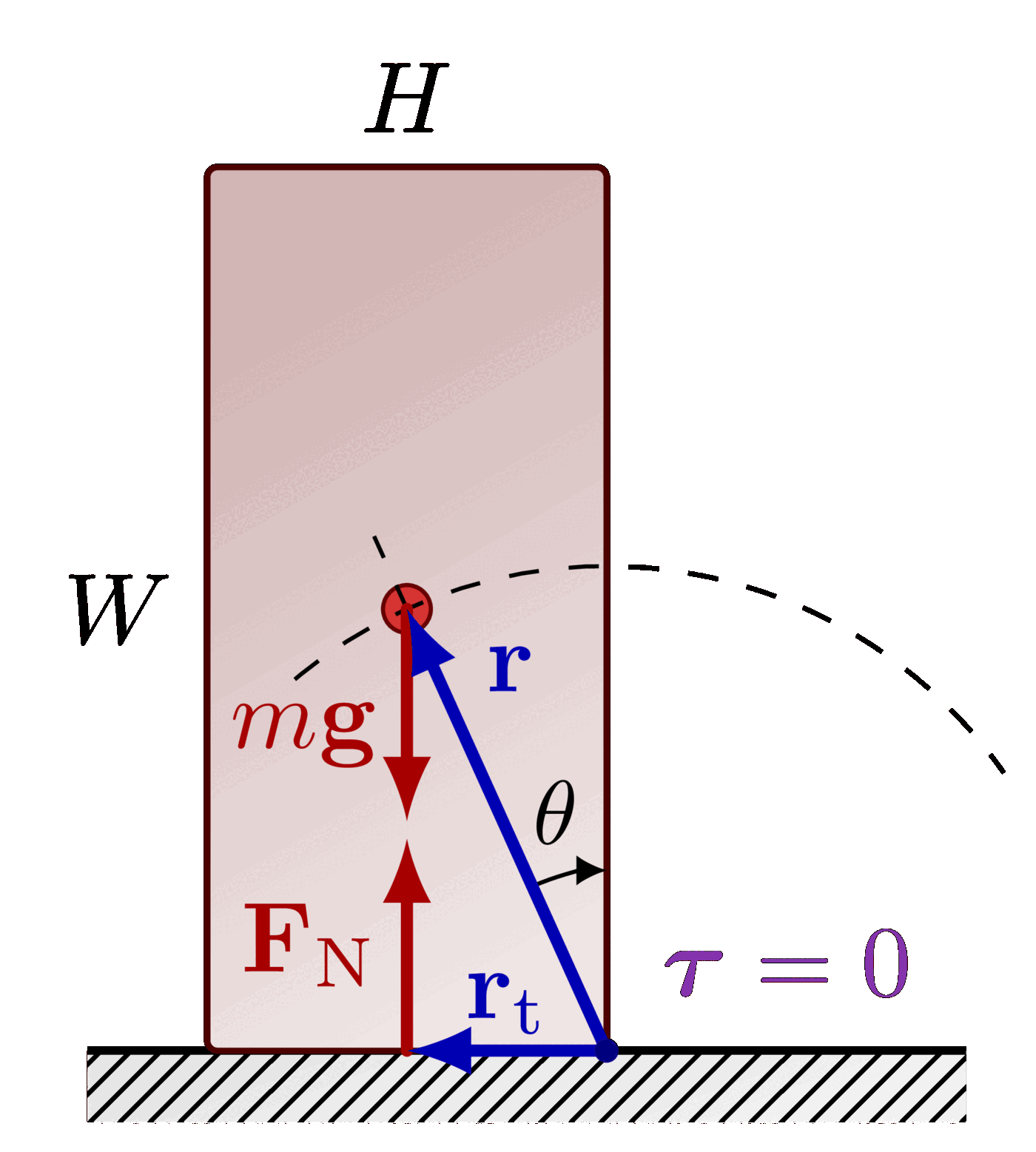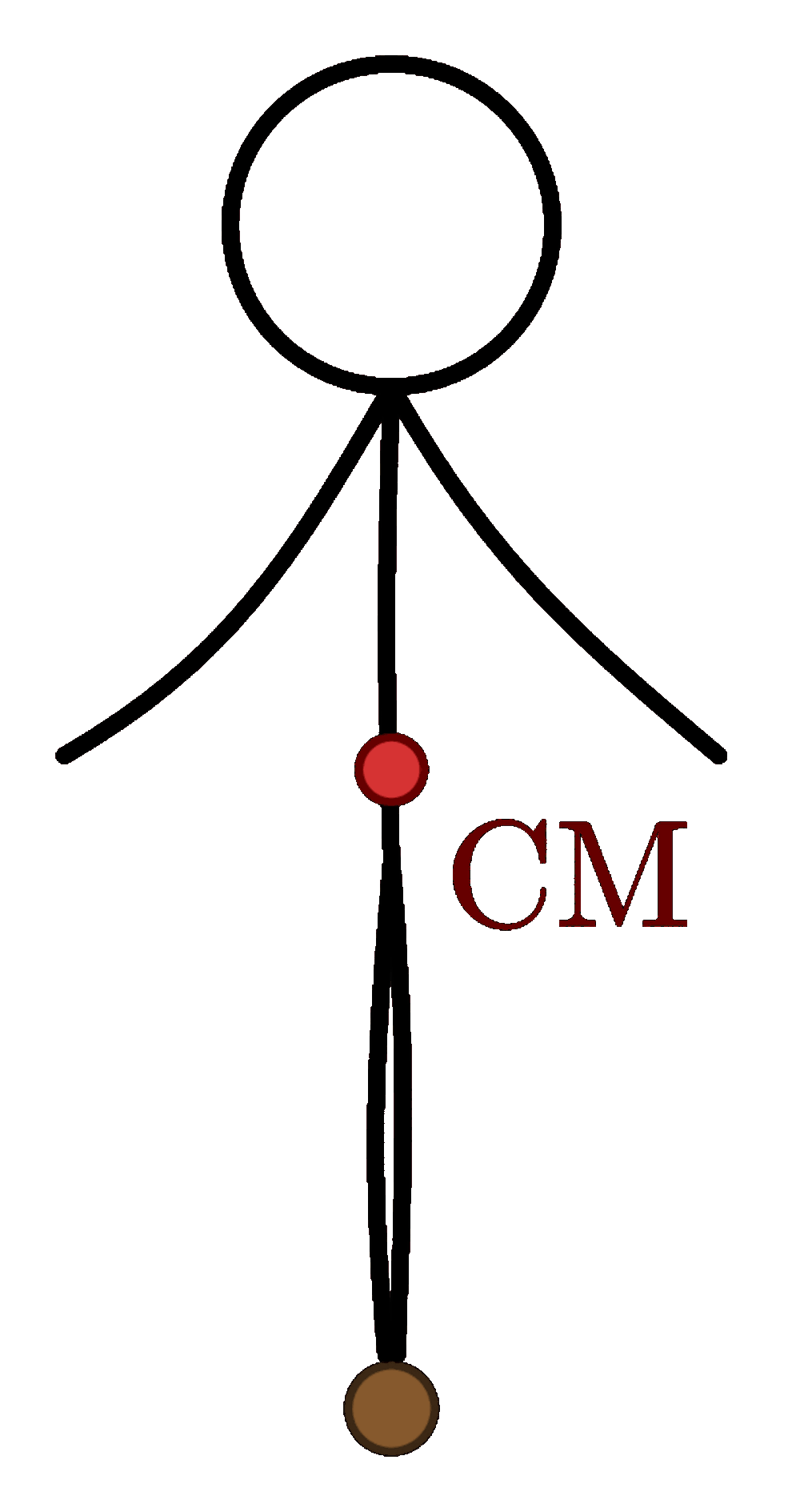Basics of torque with a bicycle wheel and balancing masses on a seesaw.
For related figures, please see the “torque” and “stability” tags. These figures are used in Ben Kilminster’s lecture notes for PHY111.
Applying a torque on a bicycle wheel tangentially to cause maximum rotation.
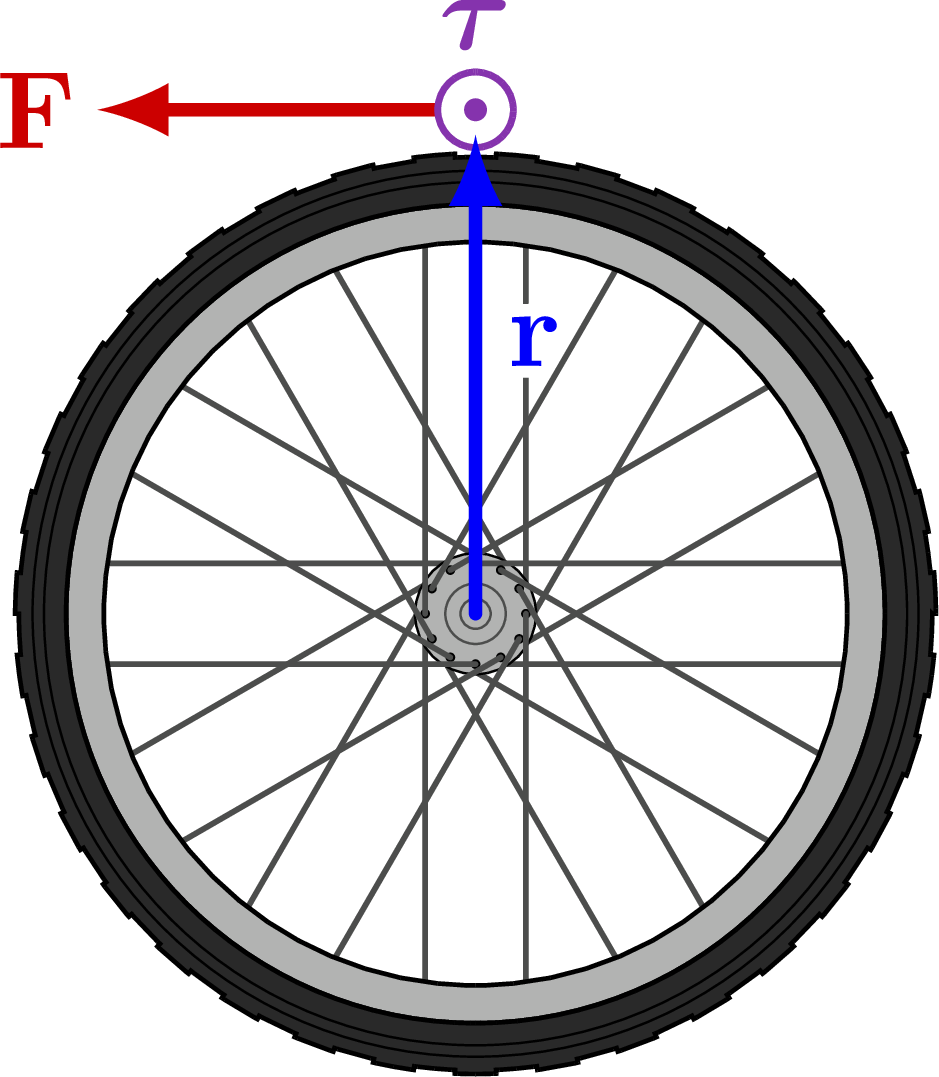
Applying a torque on a bicycle wheel towards the point of rotation.

Applying a torque on a bicycle wheel with an angle.
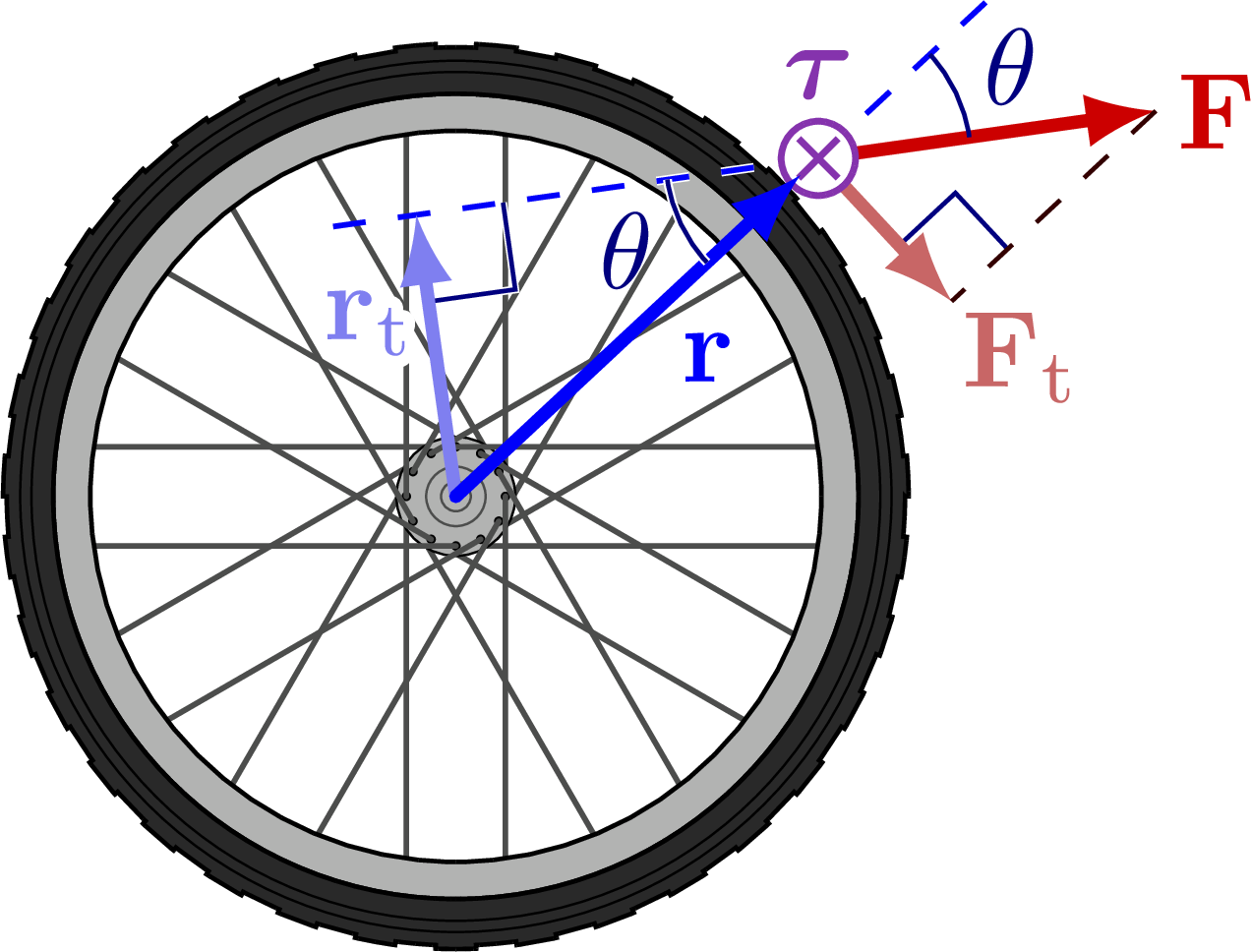
Balancing the torques of two masses on a seesaw to illustrate static equilibrium.
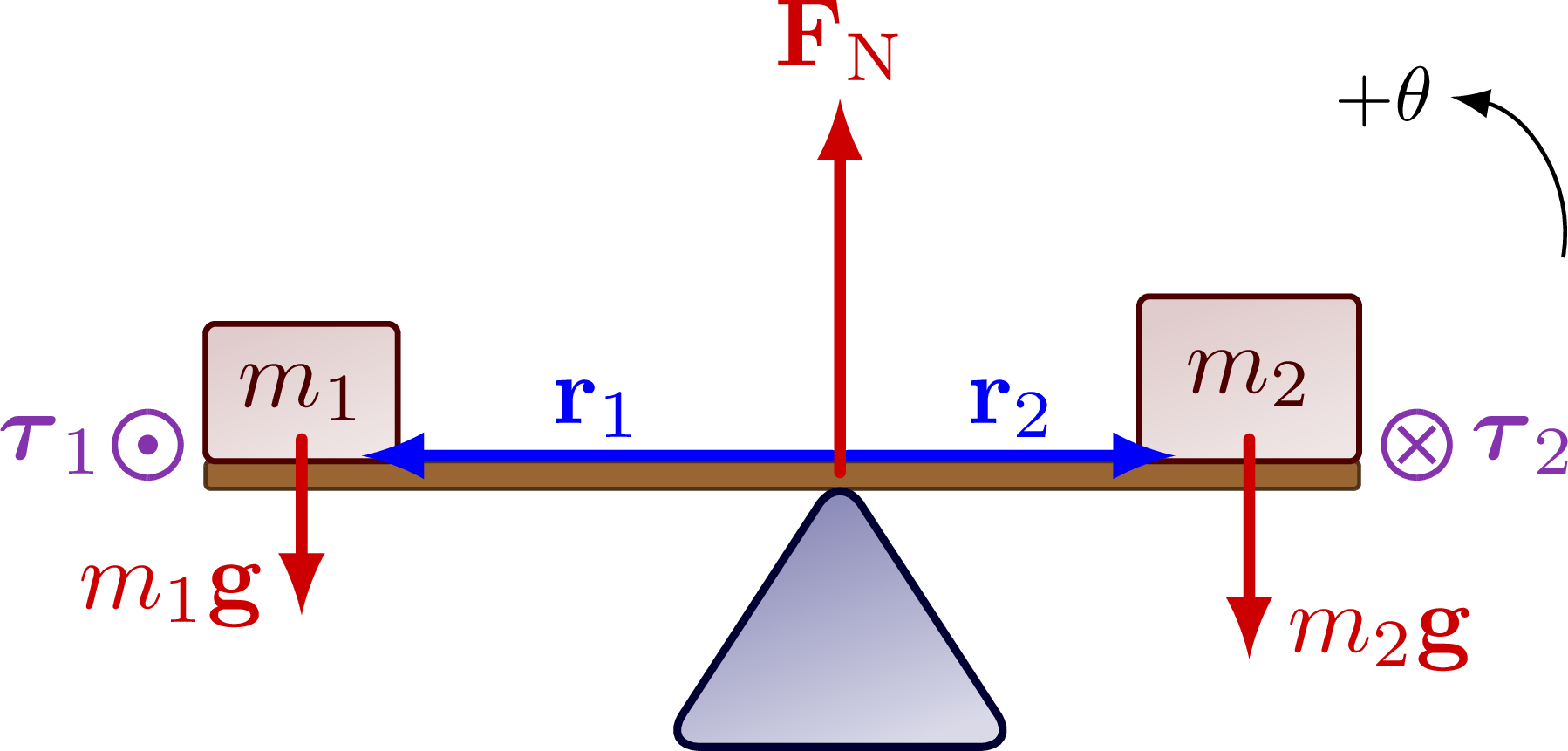
Edit and compile if you like:
% Author: Izaak Neutelings (October 2020)\documentclass[border=3pt,tikz]{standalone}\usepackage{physics}\usepackage{tikz}\usepackage[outline]{contour} % glow around text\usetikzlibrary{calc}\usetikzlibrary{angles,quotes} % for pic\tikzset{>=latex} % for LaTeX arrow head\contourlength{1.1pt}\colorlet{xcol}{blue!98!black}\colorlet{xcoldark}{blue!50!black}\colorlet{vcol}{green!70!black}\colorlet{myred}{red!80!black}\colorlet{mypurple}{blue!60!red!80}\colorlet{acol}{red!50!blue!80!black!80}\tikzstyle{rvec}=[->,xcol,very thick,line cap=round]\tikzstyle{force}=[->,myred,very thick,line cap=round]\tikzstyle{mass}=[line width=0.6,red!30!black,fill=red!40!black!10,rounded corners=1,top color=red!40!black!20,bottom color=red!40!black!10,shading angle=20]\tikzset{pics/Tin/.style={code={\def\R{0.12}\draw[pic actions,line width=0.6,#1,fill=white] % ,thick(0,0) circle (\R) (-135:.75*\R) -- (45:.75*\R) (-45:.75*\R) -- (135:.75*\R);}},pics/Tout/.style={code={\def\R{0.12}\draw[pic actions,line width=0.6,#1,fill=white] (0,0) circle (\R);\fill[pic actions,#1] (0,0) circle (0.3*\R);}},pics/Tin/.default=mypurple,pics/Tout/.default=mypurple,}\newcommand\rightAngle[4]{\pgfmathanglebetweenpoints{\pgfpointanchor{#2}{center}}{\pgfpointanchor{#3}{center}}\coordinate (tmpRA) at ($(#2)+(\pgfmathresult+45:#4)$);
Click to download: dynamics_torque.tex • dynamics_torque.pdf
Open in Overleaf: dynamics_torque.tex


